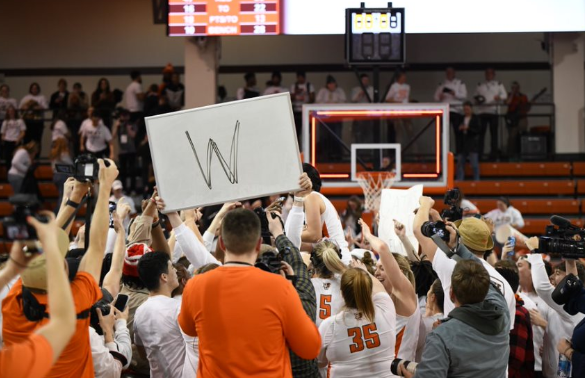Once upon a time, in the century preceding this one, a young, first-generation college student found empowerment when her history professor offered a parable to explain a student-centered approach to education.
This wise man, William “Doc” Hartel, explained to his attentive students at Marietta College that higher education emerged when a group of people who wanted to learn [the first and most-important constituent] sought out a group of people who had knowledge and skills to share [the second, but equally important constituent]. We call these groups, respectively, students and teachers.
Doc Hartel went on to explain that when these two groups became more formally organized so that they met at fixed times in set locations, then a third party became necessary because somebody needed to manage the facilities. In other words, said Doc Hartel, “somebody needed to buy the chalk.” This third party is called administrators.
While this third party was not central to the university’s mission, it was nonetheless essential to the logistics of realizing that mission. However, as the number of colleges and universities began to outnumber the students seeking the teachers, then the college/university became as much a business in search of customers as an institution of higher learning. And, as Doc Hartel explained as he concluded his parable, administrators replaced students and faculty as the most highly valued, or at least highly compensated, constituent.
Those of us in the student-faculty population might wonder how we can reclaim our rightful place in universities. And, if you have any skepticism about whether students and faculty are central to this university’s mission, consider the University’s budget and expenditures.
Your tuition continues to increase not because the University is in financial jeopardy. In fact, University assets increased from $459.5 million in 2011 to $475.9 million in 2012. That is a $16.3 million increase in total University assets.
You may be wondering whether faculty compensation is fueling your increased tuition. But the evidence would not bear that out since in the University’s 2014 fiscal year budget, only 22.9 percent of that budget will be spent on faculty salaries.
It might just be that your tuition continues to increase because these days administrators are, if I may borrow from Doc Hartel’s parable, buying some very expensive chalk.
As I noted in a previous column, the University invested $5.65 million in capital improvements to Olscamp Hall in order to implement Math Emporium [Zoom News, June 24, 2013]. But in response to a public records request for the total projects cost of Math Emporium, the Office of General Counsel noted, “There are no records responsive to your request for the project cost of the math emporium because the University is not going forward with the project at this time.”
While many students are probably breathing a sigh of relief that Math Emporium is “not going forward,” students might simultaneously be wondering why such an expensive venture was entered into without adequate vetting.
In addition to that $5.65 million for Olscamp/Math Emporium, this year the University entered into a $2.7 million contract to replace office telephones across campus. Expensive chalk, indeed.
When Doc Hartel told his parable, he had no intentions of encouraging his students to retreat in despair or cynicism. Instead, he told those eager students this story to encourage them to examine the evidence they are given, to ask critical questions of those in power, and to claim their educations by claiming their right to have a say in how their tuition dollars are going to further their educations.
I share Doc Hartel’s story because I share his hope that students will use their intellects and their voices to demand the best from their educators and from their administrators. Demand accountability for your tuition dollars.
Respond to Julie at
thenews@bgnews.com









